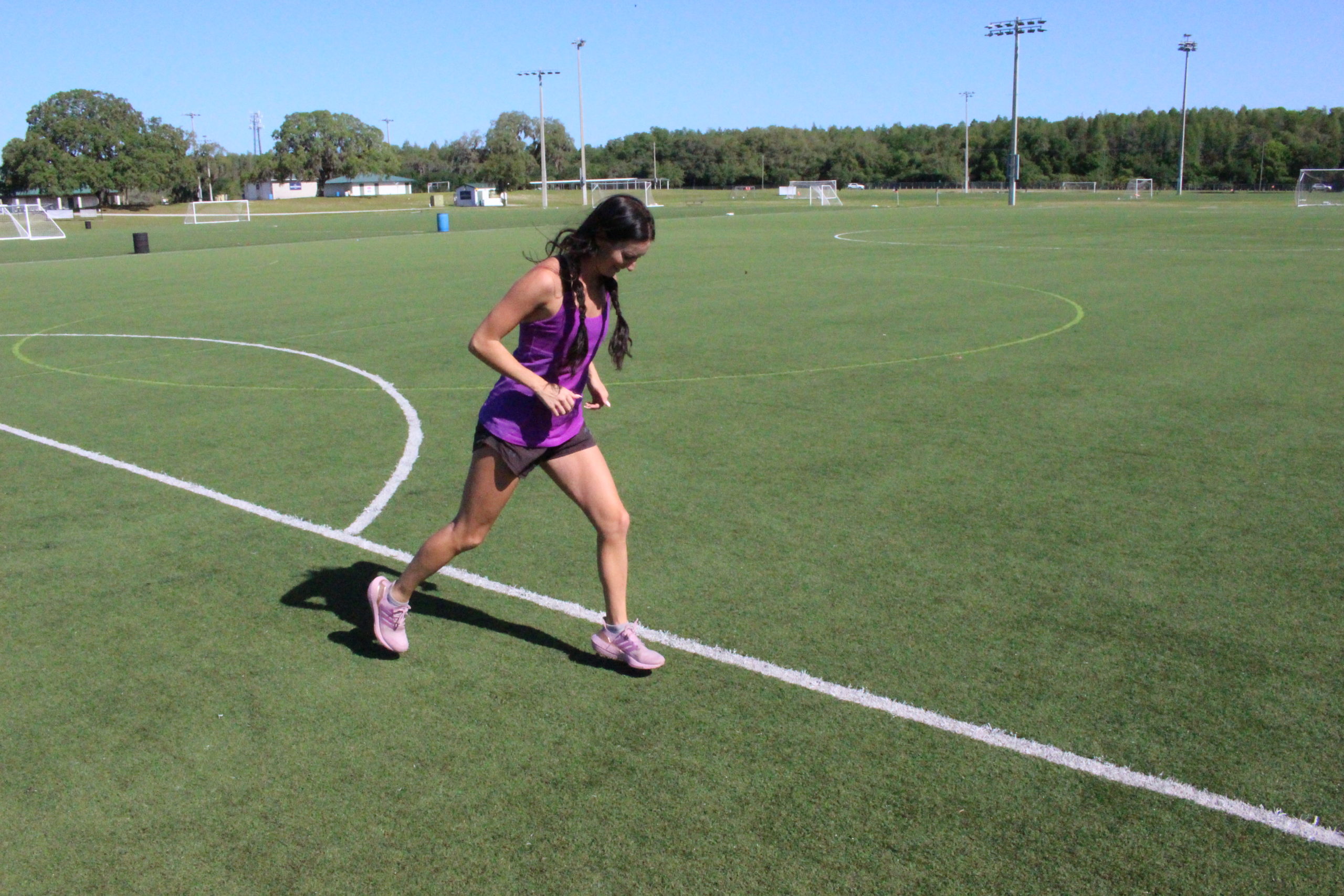
22 Sep Debunking Myths on Strength Training for Female Athletes
There are a plethora of reasons and excuses parents make that prevent them from enrolling their female athletes in strength training.
Let’s get right into it:
The Not Enough Time Excuse
If girls spend an average of 4-6 hours on their mobile device a day, or if they know every character from their favorite reality show, they can find time to work out. Life is about priorities, and girls will learn this harsh lesson as they get older and enter the workspace. Incorporating daily physical habits into life isn’t hard, so that’s the good news.
Even balancing on one leg daily while brushing teeth is an easy, actionable habit for girls to start. They will build better proprioception in their foot to improve balance and be able to progress to harder, loaded balance work, such as Single Leg Deadlifts or Single Leg Squats. Another idea is to bear crawl daily, even if it’s around the living room between commercial breaks, or to skip to the bus stop instead of walk to work on hip flexibility, arm action and ball of foot strike for speed. There are so many ways to get creative and add good movement habits into a girl’s day, and these are so easy they don’t interrupt everyday life.
Although, bear crawling around the house may confuse the dog, but it’s worth it.
The “Too Much” In-Season Scare
This is one of the biggest reasons coaches and parents are turned off by doing extra movement and strength training year-round. They feel the loading is too much on the body and will make girls sore and fatigued come game time.
Newsflash: it’s not the strength training that is doing it.
For field and court sports (lacrosse, field hockey, soccer, basketball, volleyball) it’s the eccentric loading (when the muscles rapidly lengthen and must contract to handle force) during deceleration from cutting, jumping and changing of direction. So, if these dynamic movements are the most taxing, then what isn’t?
The strength training that prepares girls for these movements, so they don’t pull a muscle or ligament.
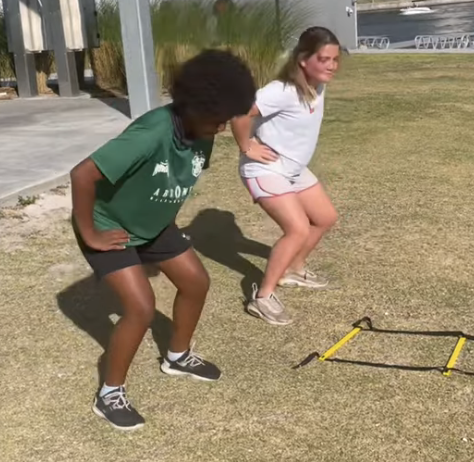
With the jam-packed nature of year-round sports, from 3-4x a week practices, to tournaments and showcases on the weekends, to packing to-go meals and snacks, to commuting copious amounts of miles and hours, to ensuring everyone maintains their sanity, it can be hard to squeak in another activity on the calendar: speed and strength training. As a matter of fact, physical preparation is the first things parents cut in the schedule and budget.
Of course, I understand how busy and overwhelming this all can get, but I also understand and feel it’s my duty to be transparent with everyone: year-round speed and training is a must if we want young female athletes to do these:
– Improve speed
– Reduce injury risk
– Stay resilient to overuse and over-training
– Improve movement quality and change of direction
– Withstand the demands of the game (deceleration, sprints, jumps, cuts)
When it comes to in-season workout templates, the good news is, they don’t need to be wild.
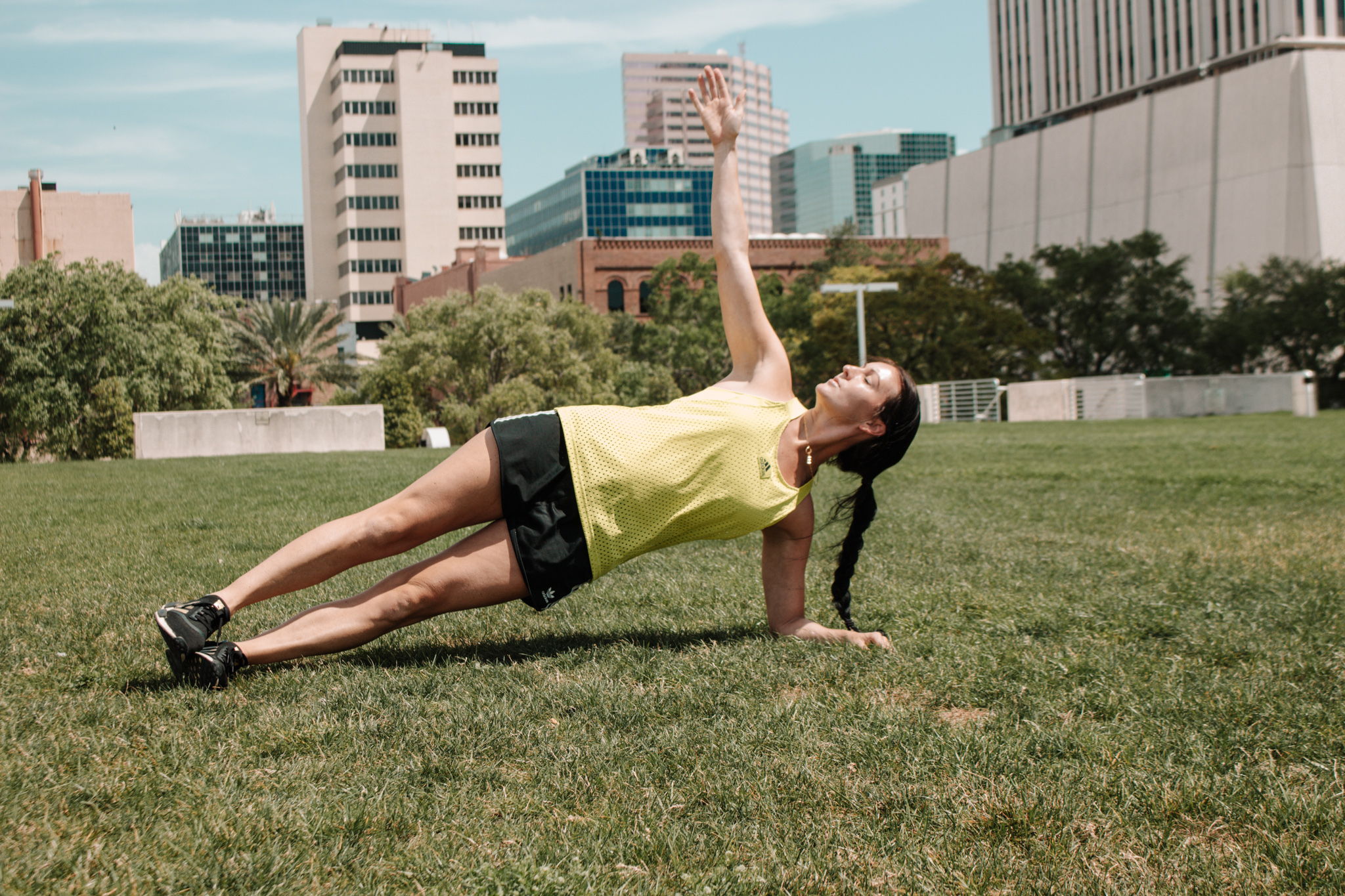
The solution is magically simple and saves an immense amount of time. First and foremost, I recommend young athletes see an in-person performance coach, but if the time spent driving to their facility is too much during the season, in-season workouts can be easy to execute at home or on the neighborhood playground.
Again, return to the daily movements, and once ready for more, add in the loaded movement patterns – Squats, Deadlifts, Pull-Ups, Push-Ups, Lunges.
In-season workouts should leave the athlete feeling good and energized, not sore and defeated.
In-season workouts should leave the athlete feeling good and energized, not sore and defeated. Share on XTherefore, the sets and reps remain low and admittedly, I don’t venture over 6 reps, unless it’s hip or upper body isolation work. It’s worth mentioning that in-season training gives the Early Specializing athlete a fighting chance to survive. They will be better equipped to handle the year-round shenanigans because they’re working on muscle imbalances and weaknesses from doing the same sport over and over. In this case, strength training can be the “second sport” and athlete does to get motor skill variety.
Encouraging girls to get their priorities straight and develop an organized routine for strength training will help them to stay healthy in-season. Too, it teaches them discipline in busy times. Because guess what? When they grow older and enter the real world, they’re going to have to make their physical health a priority.
Teach them these consistent habits young.
The Fear of Too “Bulky”
“But I don’t want to get bulky,” many female athletes utter this phrase. It is one of the top reasons young girls are reluctant to get under the iron.
There are many layers to peel back in this discussion – the way parents talk about body image, what is said in school, or what is seen as “ideal” on social media. Societal expectations and what the mainstream labels as “a fit body” can jostle any girl’s psyche as she grows into her physique.
Even Serena Williams, the greatest female tennis player to ever live, has received heavy criticism regarding her athletic build. “Too thick” or “big” or “manly” have been some of the comments thrown her way. It’s sad because she is the quintessence of a strong and powerful woman, who is the best in the world because of her physical capabilities. If Serena didn’t have her amazing muscles and athleticism, she wouldn’t be the best.
It’s hard out there for female athletes, adult and young, because bodies will be nitpicked know matter who it is.
“Bulky” is an interesting term because what does it mean? No really, what does it mean? Big? Athletic? Muscular?
Or is it a term that birthed from the bodybuilding community and young female athletes are afraid to look like bodybuilders?
Female athletes can rest assured that it takes an immense amount of volume (tons of sets and reps), isolation work, two workouts a day, meal timing, extra calories compared to the normal woman, and illegal performance enhancers (which I don’t recommend EVER) to look like a bodybuilder. Too, female athletes who play sports that cover a lot of mileage (5-6 miles a match for soccer players, then add on the 2-4 practices a week) are getting enough endurance work to offset too much muscle gain and the “bulkiness” they fear.
“Bulky” is also a highly unique and vague concept. Every female athlete will put on muscle differently. Some may get more definition in their shoulders, some their hamstrings, some their hips, and this depends on their overall stature – height and bone structure.
Every female athlete will put on muscle differently. Some may get more definition in their shoulders, some their hamstrings, some their hips, and this depends on their overall stature – height and bone structure. Share on X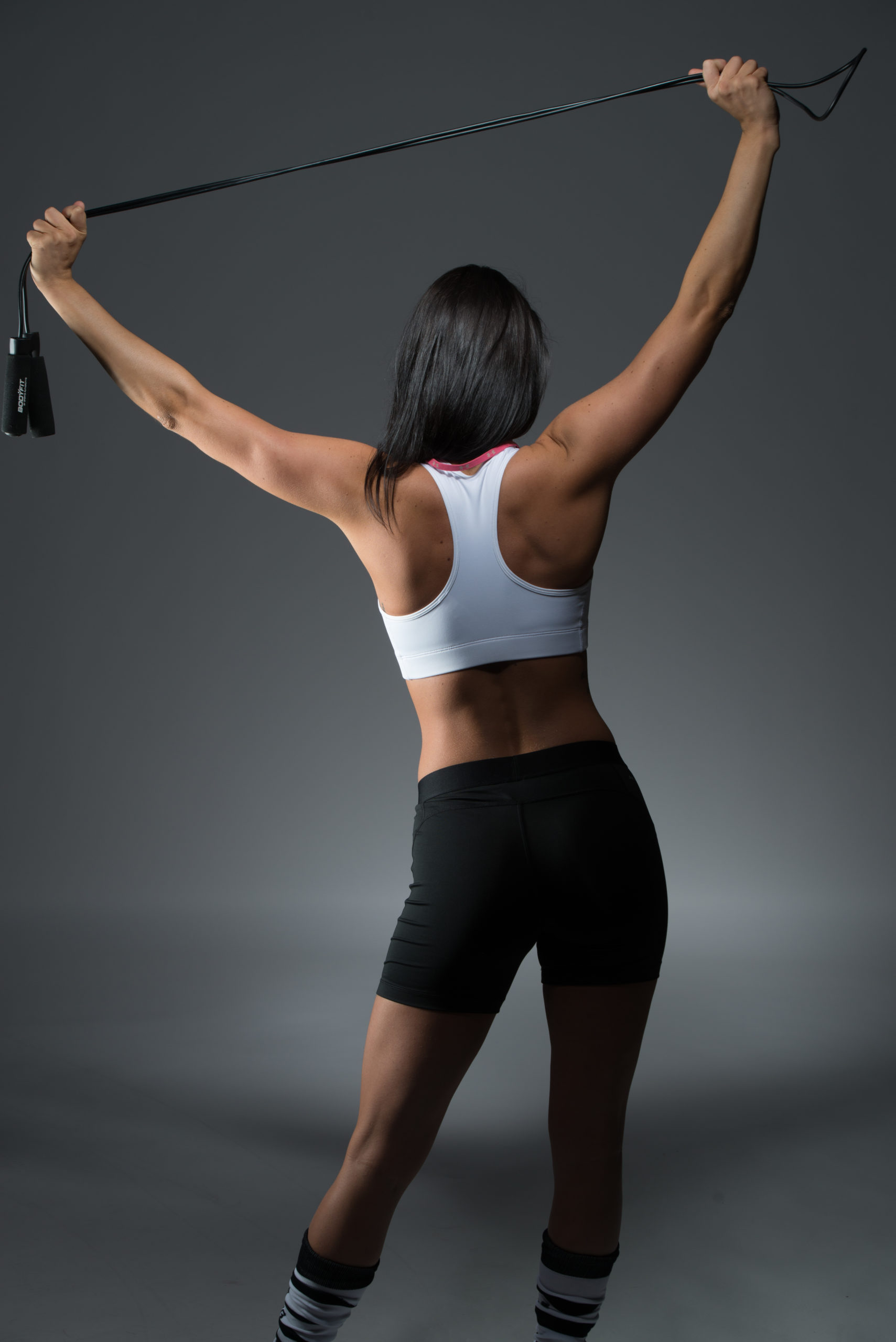
To help girls tackle the “bulky” problem, focusing on performance is my go-to. Coming back to the physical tests earlier in this book, are they improving their strength, speed and power numbers with consistent weight training? Do they feel more confident on the pitch? Do they have increased energy levels? Do they have improved mood and focus? Putting on muscle is not only good for performance, but it is excellent for overall health.
Strength Doesn’t Slow Girls Down
It only adds more to the engine.
Research suggests there is a strong correlation between maximal strength and sprint times. The stronger the athlete is, the faster they will be. Speed is all about being able to produce more force, and in order to produce more there needs to be more muscle to elicit this. Even during an 8-week in-season resistance training program, acceleration, speed, jumping, and ball power can be drastically improved in soccer players (Panagoulis). For female softball players, bodyweight and relative strength have strong to very strong correlations with speed and change of direction ability (Nimphius).
This is a great segue into the next tool: power training. Building explosiveness involves training the components along the force velocity curve, where in the middle lies power. In order to build a powerful female athlete, they can’t train one end of the curve. Some just train strength with no sprint work, while others just train speed with no lifting. Training should encompass all pieces along the curve in order to optimize and find the golden middle of power output. Once this is nailed down, lifting weights do not make female athletes slow. The blend of getting under iron with explosive jumps and max effort sprint work on the pitch is the way to go.
Is It Safe?
Let me ask this: is going for a head ball safe? Is going for a tackle safe? Is jumping safe? Is pushing and shoving safe? Is changing direction safe?
The most aggressive actions in sport rarely get questioned, while supervised weight training does.
When it comes to safety, the most aggressive actions in sport rarely get questioned, while supervised weight training does Share on XIt’s comical, to say the least. “I don’t want her to get injured,” a parent remarks about lifting weights, thinking it’s going to be a bootcamp or CrossFit class that will obliterate their daughter. “I don’t want it to stunt her growth,” another parent comments. This couldn’t be more far from the truth, so long as the right people are teaching youth female athlete resistance training.
Here’s a mic drop for everyone: the problem isn’t weight training being unsafe, the problem is not weight training enough to stay safe in sports.
The problem isn’t weight training being unsafe, the problem is not weight training enough to stay safe in sports Share on XAs the demands continue to amount, so does the training on the back end to build a robust female athlete. Strength training is safe when taught by a professional. Too, the more a girl does her daily habits, the quicker and safer her progression will be. Her growth won’t be disrupted, in fact, quite the opposite. It will be facilitated because her intermuscular coordination will improve, her body composition will improve, her control over her momentum will improve, but most importantly, her confidence will blossom.
So long as a performance coach is teaching the main movements well, and girls are not throwing their backs out during loaded deadlifts and squats, resistance training is incredibly safe and beneficial to the youth female athlete.
She can’t go wrong with getting strong.
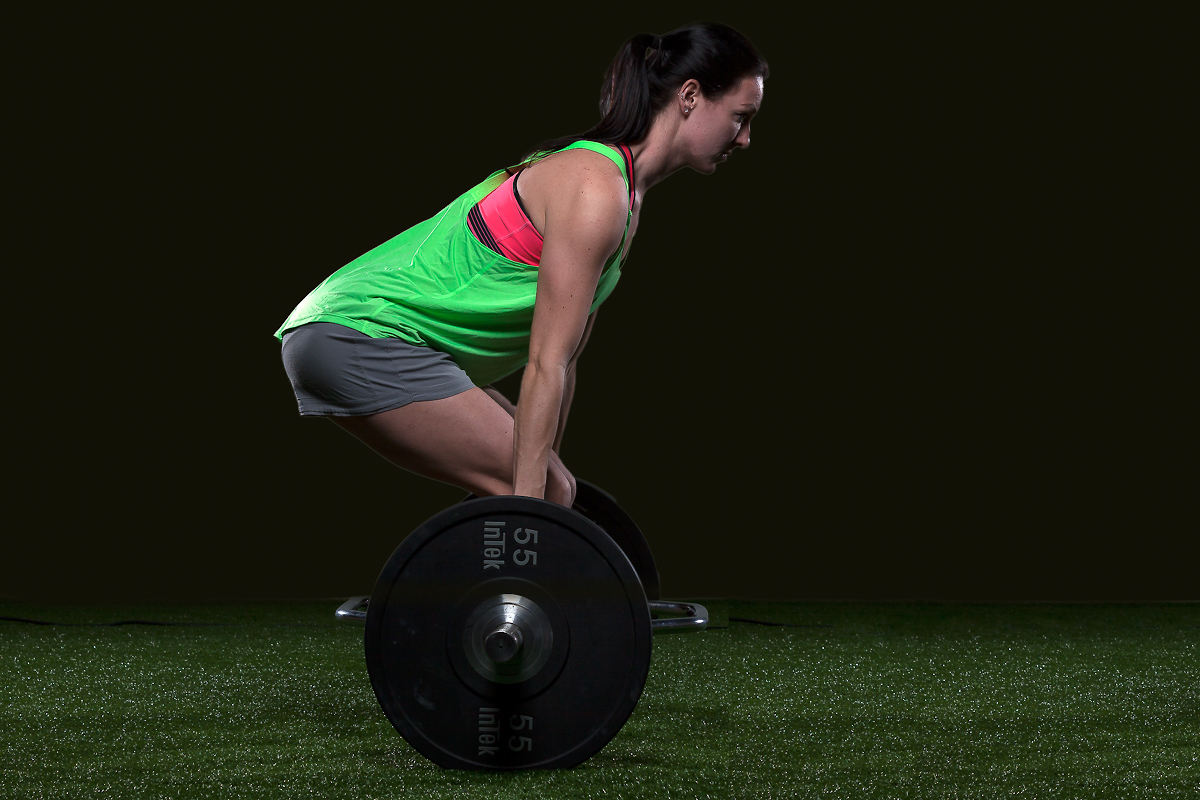
Need more personalized help from Erica? BOOK A CONSULT HERE

Interested in Remote Training for Female Athletes? BOOK A CONSULT HERE
Get Erica’s first book THE STRONG FEMALE ATHLETE
Get Erica’s second book FEMALE ATHLETE HIGH PERFORMANCE
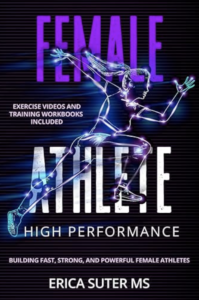
Check out her podcast: The Strong Female Athlete
REFERENCES
1. Panagoulis, Charalampos1; Chatzinikolaou, Athanasios1; Avloniti, Alexandra1; Leontsini, Diamanda1; Deli, Chariklia K.2; Draganidis, Dimitrios2; Stampoulis, Theodoros1; Oikonomou, Triantafyllos2; Papanikolaou, Konstantinos2; Rafailakis, Lefteris1; Kambas, Antonios1; Jamurtas, Athanasios Z.2; Fatouros, Ioannis G.2 In-Season Integrative Neuromuscular Strength Training Improves Performance of Early-Adolescent Soccer Athletes, Journal of Strength and Conditioning Research: February 2020 – Volume 34 – Issue 2 – p 516-526 doi: 10.1519/JSC.0000000000002938
2. Nimphius S, McGuigan MR, Newton RU. Relationship between strength, power, speed, and change of direction performance of female softball players. J Strength Cond Res. 2010 Apr;24(4):885-95. doi: 10.1519/JSC.0b013e3181d4d41d. PMID: 20300038.
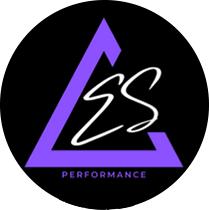

Stuff to Read While You’re Pretending to Work: 9/27/21 – VocalBox Media
Posted at 14:06h, 27 September[…] Debunking Myths on Strength Training For Female Athletes – Erica Suter […]
Will León
Posted at 10:32h, 12 OctoberThank you Erica great post. Greetings from Ciudad del Ese,Paraguay(border with Brazil)
erica
Posted at 11:45h, 12 OctoberOf course! 🙂